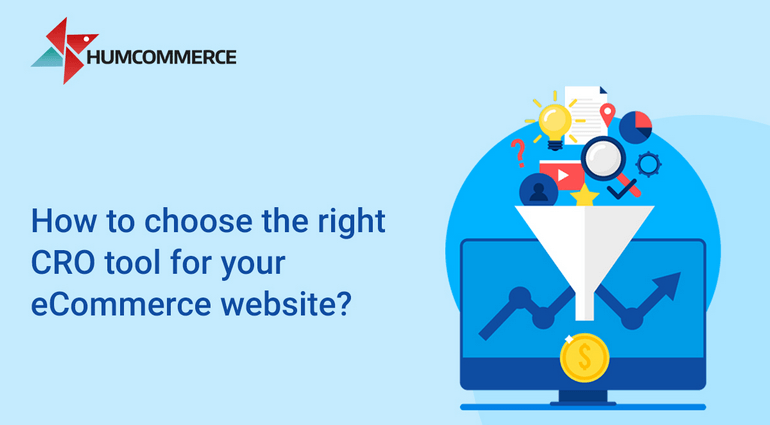Are you having web traffic, but not enough revenue to show for it? Do you want to increase your eCommerce sales and revenue?
Or are you working on a problem that may hinder your online business conversion? It is sad to spend so much energy on your eCommerce site and to see high traffic without conversions.
If you’re having these kinds of issues, you’ll need to work on optimizing your conversion rate. Conversion Rate Optimization (CRO) involves a lot of iterations and testing. Most of the CRO activities are for your existing website. And with the right CRO tools, you can fix any issues.
These CRO tools collect performance data in the form of reports or visual displays. Platforms like Google Analytics focus more on user behavior. You may not need to be an expert to use these tools. You may be aware that the average web conversion rate is 2.35%.
But only 25% of businesses have a conversion rate of 5.31%. Not all platforms are the same. Unlike your closest competitors, your audience is unique.
Unfortunately, many marketers focus on attracting visitors without turning them into buyers. This is because anyone who lands on your website is somehow interested in what you offer. Yet, not everyone who visits does so for purchasing purposes.
So, It is better to optimize for your audience to increase sales and profits, instead of spending vast amounts of money on increasing traffic.
What Is CRO?
First, conversion is the act of convincing shoppers to take your required action. While the conversion rate is the percentage of the visitors who took action on your site.
Visitors reach your website through your ad or landing page. CRO is the science that understands and analyzes what your visitors want. This is one effective and fast way to achieve your eCommerce business goals.
What Is a CRO Tool?
This is a tool that gives you a deep understanding of your visitors and their behavior. Its purpose is to help convert visitors into customers and increase revenue. These tools are like secret weapons that enhance your workflow and save you a lot of money.
What Are the Different CRO Tools?
What should the dashboard look like? HumCommerce is an excellent example of what a CRO tool dashboard must look like. It has been in the market since 2011 as an eCommerce solution(CRO Tool).
Using this tool, eCommerce businesses can study user behavior. It will help your business overcome all limitations and increase the conversion rate. HumCommerce is an analytics tool that records all visitor activities.
You can lay your hands on hundreds of CRO tools available for your business. But these are the basic features they offer:
- Data analytics.
- User-behavior tracking.
- Identify obstacles.
- A/B testing.
- Page load speed test.
- Landing pages.
Data Analytics

You should not assume that you understand your buyers’ journey. It is difficult to find the right CRO tool that eCommerce websites can take advantage of. E-commerce businesses need to track existing data and easy analysis. There are many tools available to choose from.
By using tools to map the customer’s journey, you can learn about your potential visitor. Such as the mobile experience and the keywords shoppers look for on your site.
This is an essential step in optimizing conversions. Knowing this will guide the way you’ll create your value proposition. Also, you’ll learn how to use the principles of social proof, urgency, and scarcity to communicate.
Let’s look at Google Analytics – a popular CRO tool.
Google Analytics (GA) and Google Analytics 360
This tool is famous everywhere. It’s hard to find someone in the digital marketing field who hasn’t heard of it. GA is so valuable for two reasons.
First, it offers an unparalleled range of features. Second, it works well with various third-party tools based on the collected data. Few other platforms have the same level of functionality and flexibility.
Google Analytics 360 is the commercial version of GA. It works with various platforms and has many other features. Features such as cloud storage, advanced reporting, real-time web analytics, and funnel analysis.
User-behavior Tracking
To improve the user experience and the general CRO of your site, you must track the behavior of visitors. You need to see what actions they take while visiting your website.
A study conducted by the NN Group showed that most people who browse the Internet do not read well.
When you study the behavior of your target audience, you can get information on why they behave in a certain way. This will help you to create better conversion sites. You can study the behavior of the target audience.
- By setting up session recordings on website pages.
- Careful study of how customers interact with your site.
These can provide valuable information and knowledge about several things.
This may include:
- The time they spend on the site.
- The most clicked areas.
- Problems encountered when completing forms.
- CTAs that do not are functional.
- Pages they visit most, etc.
These combinations allow you to understand user behavior on the site better.
Tools such as CrazyEgg, Hotjar, And HumCommerce are examples of excellent CRO tools. These tools offer you heat maps and session recording setups for your eCommerce site.
Heat maps are useful to map your website and see which parts are most clicked and followed by visitors. Also, it shows areas where visitors spend most of their time.
Testing your hypothesis with a heat map is a smart move. You can determine how your visitors are traveling through the conversion funnel. The visitor recordings are great insights for you to understand real-time visitors’ interaction.
Identify Obstacles
You can find out which pages may be problematic and understand the behavior of your visitors. You should start by identifying website barriers customers may have. Later you need to test these barriers for not converting.
You can identify leakage in the conversion funnel and its possible causes. The qualitative and quantitative data collected by web analytics are of great use. You will know what you should focus on.
A/B Testing

One of the most important reasons for testing is to understand the effects of changes. Find out if any specific changes on your site can help you get better conversions. Constant analysis and improvement are the pillars of a successful eCommerce platform.
Because this allows marketers to make decisions and understand what makes customers register. A marketer’s job is to make visitors take desired actions or buy.
Displaying the right message, at the right time to the right person is crucial. It allows you to complete the elements of the client’s journey.
Furthermore, optimize key points, conversions, and micro conversions. Conversion rate optimization tools make A/B testing a continuous process.
Keep this in mind: A /B Test and Multivariate are various test methods. Each one has its advantages and disadvantages. The decision to use one of these three methods depends only on the task in question.
Due to its simplicity, the A/B test seems to be the most appropriate. It is especially useful when design changes are not complicated.
A split test is helpful in situations where a design change requires benchmarking — marking the original version to the new page with a completely different URL.
Examples of conversion rate optimization tools in this category are Convertize and Optimizely.
Page Load Speed Test

One easy way to lose shoppers is when your website loads at a slow speed. There are many ways to speed up your website. You’ll need to reduce the size of multimedia files, such as images and videos. Also, subscribe to a powerful hosting service.
Free tools like GTMetrix and Google PageSpeed Insights test the speed of your website.
These tools collect and display information. The PageSpeedInsights from Google analyzes the content of the site. It generates suggestions to help it load faster.
Recommendations may include maintaining the browser’s cache, reducing CSS, and optimizing images.
Landing Pages
One of the essential landing pages on your website is the homepage. The landing pages can help you collect emails, direct visitors to offers, or ask them to take action.
You can learn how to set up your website by reading guides on how to create a landing page. Tools like Unbounce and LeadPages will help you create landing pages with ease.
You will experience a positive impact on your business. LeadPages is easy to understand because of its many features. It includes drag-and-drop widgets and lead management support.
It also has various templates to ease development work. LeadPages provides several predefined templates that are useful. This tool is a great resource, especially if you don’t have much design experience.
In Conclusion
Getting your value proposition right is an essential part of CRO. The business strategy must focus on having relevant visitors and converting them. Having the right CRO tool is essential. However, it is not enough to guarantee improved conversion rates.
Know that no selection of conversion rate optimization tools will help you to convert if you’re not providing your customers with values. CRO is a science on its own. And it requires marketing patience and time.
Smaller websites can enjoy CRO if done with careful guidance. Your platform needs relevant traffic to confirm results through various tests.
Conversion rate optimization tools give you a deep understanding of buyers and their behavior on your eCommerce site.
Pritesh B is a digital marketer with a fortunate habit of learning from people around him. He has a master’s degree in marketing management. He grew up in Pune and is currently working with Hummingbird Web Solutions. He is passionate about SEO and is a CRO (Conversion rate optimization) enthusiast. He is focused and result-oriented, but can also be a bit whimsical. You can connect to him via LinkedIn.






